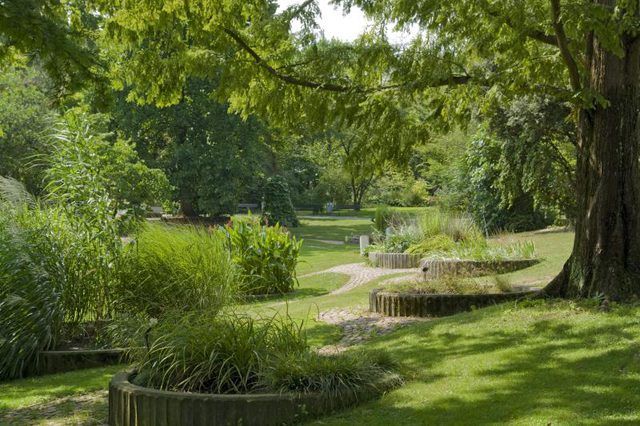Bulbs
Flower Basics
Flower Beds & Specialty Gardens
Flower Garden
Garden Furniture
Garden Gnomes
Garden Seeds
Garden Sheds
Garden Statues
Garden Tools & Supplies
Gardening Basics
Green & Organic
Groundcovers & Vines
Growing Annuals
Growing Basil
Growing Beans
Growing Berries
Growing Blueberries
Growing Cactus
Growing Corn
Growing Cotton
Growing Edibles
Growing Flowers
Growing Garlic
Growing Grapes
Growing Grass
Growing Herbs
Growing Jasmine
Growing Mint
Growing Mushrooms
Orchids
Growing Peanuts
Growing Perennials
Growing Plants
Growing Rosemary
Growing Roses
Growing Strawberries
Growing Sunflowers
Growing Thyme
Growing Tomatoes
Growing Tulips
Growing Vegetables
Herb Basics
Herb Garden
Indoor Growing
Landscaping Basics
Landscaping Patios
Landscaping Plants
Landscaping Shrubs
Landscaping Trees
Landscaping Walks & Pathways
Lawn Basics
Lawn Maintenance
Lawn Mowers
Lawn Ornaments
Lawn Planting
Lawn Tools
Outdoor Growing
Overall Landscape Planning
Pests, Weeds & Problems
Plant Basics
Rock Garden
Rose Garden
Shrubs
Soil
Specialty Gardens
Trees
Vegetable Garden
Yard Maintenance
How to Prune Peegee Hydrangeas
How to Prune Peegee Hydrangeas. Peegee hydrangeas (Hydrangea paniculata "Grandiflora") become large over time, but pruning them controls their size. Named for the initial letters of "paniculata" and "Grandiflora," peegee hydrangeas are hardy in U.S. Department of Agriculture plant hardiness zones 3 through 8. When not...

Peegee hydrangeas (Hydrangea paniculata "Grandiflora") become large over time, but pruning them controls their size. Named for the initial letters of "paniculata" and "Grandiflora," peegee hydrangeas are hardy in U.S. Department of Agriculture plant hardiness zones 3 through 8. When not pruned, these deciduous shrubs grow 10 to 25 feet tall and 8 to 16 feet wide. Before and after pruning peegee hydrangeas, help prevent the spread of plant pests and diseases by wiping pruning shear and pruning saw blades with a cloth that was dipped in rubbing alcohol. In some areas of the United States, peegee hydrangeas are invasive.
Pruning Young Peegees
Pruning peegee hydrangeas during three of the first four years after planting them helps produce compact shrubs. In the first late winter or early spring after planting them, before their new growth appears, prune the shrubs to 6 to 12 inches tall. Prune just above outward-facing leaf nodes on each stem. Leaf nodes are small bumps on stems.
The following late winter or early spring, prune the peegee hydrangeas to about 12 inches tall, again pruning above leaf nodes that face outward. Don't prune the shrubs in the third year, but prune them to 24 inches tall the fourth year after planting.
Removing Unwanted Branches
Mature peegee hydrangeas benefit from being pruned in spring to remove dead, damaged and poorly growing branches. Diseases can enter and spread from dead wood, and damaged branches also allow disease into the shrubs. When the peegees' new growth appears in spring, prune each dead branch where it joins the rest of its shrub, and prune each damaged branch 2 to 3 inches below the affected area, just above an outward-facing leaf.
Weak and poorly formed branches spoil the shrubs' appearance and shape. Prune those branches at the same time you remove dead and damaged growth.
Controlling the Shrubs' Size and Appearance
Annual pruning restricts the size and appearance of mature peegee hydrangeas. These shrubs often look their best at 6 to 10 feet tall. Prune mature peegees when their new growth appears. Cut each stem to the desired length just above an outward-facing leaf bud.
Overgrown shrubs also benefit from having their old, crowded growth thinned. Prune about one-quarter of the branches of an overgrown shrub, evenly spacing which branches you prune. Prune just above the ridges of bark where they join the main stem. A pruning saw is usually needed to remove branches. Saw carefully 1 to 2 inches upward through the lower part of a branch before sawing downward to meet the lower cut.
Promoting Large Flowers
Removing all except a few peegee hydrangea stems encourages the shrubs to produce very large flowers. Peegee hygrangeas flower on new growth. The flower clusters are usually 6 to 8 inches long, but the shrubs can bear clusters up to 18 inches long.
If you want large flowers, remove all but five to 10 stems from each shrub in spring when new growth appears. Prune the unwanted stems where they join the main stem.